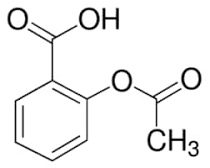
Salicyclic acid
This plant hormone can be synthesized in any part of the plant but then travels in the phloem to other parts of the plant where it turns on (or represses as the case may be) plant responses.
Salicyclic acid, like most of the other plant hormones, is implicated in a bewildering variety of functions. In one species or another, it affects many aspects of plant growth and development.
Some of these functions have been demonstrated by the application of salicyclic acid to the plant and may not present an accurate picture of the role played by the salicyclic acid produced within the plant itself.
One function that is clearly mediated by endogenous salicyclic release and translocation is the plant's response to damage, for example, by herbivorous insects feeding on it or by pathogens (e.g. bacteria) invading it. In these cases, salicyclic acid is released by the cells suffering damage, enters the phloem and travels to as yet undamaged parts of the plant where it turns on protective defenses.
| Other plant hormones | |||||||
|---|---|---|---|---|---|---|---|
| Abscisic acid (ABA) | Auxin | Brassinosteroids | Cytokinins | Ethylene | Gibberellins | Jasmonates | Strigolactones |
| As you read about these various hormones, you will note that: (1) each hormone affects several, or even many, different processes and (2) each process is, in turn, influenced by several different hormones. How these overlapping signals are integrated to produce a particular response remains a topic of active research. | |||||||
Substituting an acetyl group for the hydroxyl group produces acetylsalicyclic acid, or aspirin — one of the oldest and most used medicines.

| Welcome&Next Search |